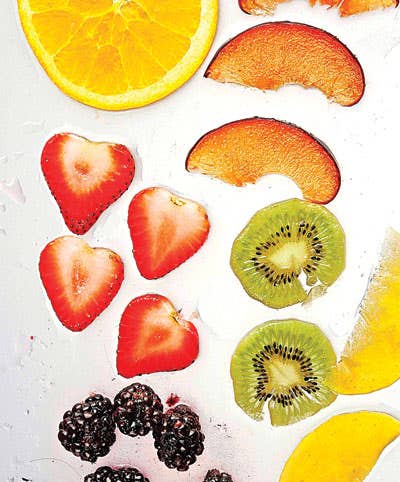
Fruit Transcendent: How Maceration Works
It's hard to improve on fresh strawberries picked absolutely ripe, at the height of their flavor and fragrance. Still, this issue's story on Swanton Berry Farm got us thinking about all the delicious things you can do with berries, including a technique that can transform just about any kind of fruit into a decadent dessert: maceration. It's a no-cook method that involves nothing more than soaking fruit in a liquid—usually something acidic, like lemon or lime juice, or wine or liquor—and letting it sit at room temperature. Often, sugar is added, too. In the case of the strawberry compote recipe, the fruit softens and releases its juices, which combine with the sugar to create a syrup infused with the fruit's essence. Within ten minutes you have a luxurious, intensely flavorful compote that's delicious over cheesecake, short cake, pound cake, or ice cream, or simply spooned up on its own. How can something so good be so easy?
According to food scientist Shirley Corriher, sugar is the key. "The sugar is pulling water out of the fruit's cells," says Corriher. "It's also preserving the mixture of pectic substances that holds the cells together so that the fruit isn't reduced to mush." Brooks Headley, executive pastry chef at Del Posto, an Italian restaurant in Manhattan, also adds a pinch of salt, which sharpens the flavors and further extracts the juice. He uses maceration as a step in making sorbet, adding the syrup to the base to intensify its flavor. Thanks to maceration, says Headley, "the fruit becomes a greater version of itself."
Keep Reading
Continue to Next Story
